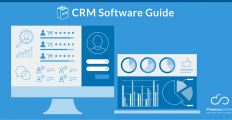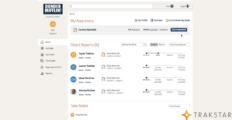Open workspaces. Employees laughing out loud, and coworkers interrupting with exciting news (best known as gossip). Emails waiting impatiently to be opened. Social media and the whole World Wide Web. Meetings.
These are not random words and phrases. These are all common workplace distractions. Oof! Staying focused suddenly sounds like an achievement that deserves a medal.
Interruptions at work are not innocuous. It takes employees an average of 23 minutes to regain focus and return to their tasks. Productivity loss from workplace distractions alone costs US businesses roughly $650 billion per year. That’s a lot of money. So you have to do something about it.
If you’re wondering how to improve employee productivity with so much temptation around, the answer is surprisingly simple. Teach employees how to resist distractions with good old employee training. In fact, according to a Udemy survey, 70% of respondents agree that “training can help people block out distractions.”
Workplace productivity training is largely about encouraging employees to form work habits and follow processes that increase productivity. Therefore, it’s more of a “learning on the job” process with a hint of formal training.

The 8 Easiest Ways you can Help Employee Productivity Soar
What does productivity training look like in practice? Let’s dive into 8 ways you can train productivity at work so that your employees win that medal!
1. Learn from the Wisdom of Project Management and Communication Tools
Productivity is not measured only by the amount of work an employee delivers. Other parameters to factor in are speed and quality of work. Project management and communication tools reduce mistakes and waiting times by streamlining work procedures and facilitating transparent and fast communication.
That said, the tools should be used wisely. Different departments using different tools can create confusion. The same will happen if you use too many or too complicated tools. Test drive a few options and pick the tools your team is most comfortable with.
As far as communication tools go, email communication is overwhelming for some. To help employees who feel haunted by their inbox, instruct everyone to set a timeframe for checking and responding to emails.
There’s a lot to learn from project management and communication tools. Employees learn to work with to-do lists, therefore becoming more efficient in prioritization and organization. They also develop the habit of conducting job-related communications on a platform where they can keep a record of them instead of relying on casual, verbal understandings.
2. Use Time-tracking Software
Time tracking is an eye-opener for employees who are always falling behind on their tasks but can’t figure out where their time goes. An automatic time-tracking tool records how much time employees spend on different tasks and other activities without them having to update entries manually.
Some of the most common time drainers are:
- irrelevant activities employees engage in, like internet browsing
- flaws in work procedures, like projects being on hold due to delayed responses from other departments and clients
- inefficient time management and prioritization that usually results in the employee constantly shifting between tasks
And how does time tracking increase employee productivity? It enables employees to identify their pain points and implement changes to increase their time efficiency. They can do so either by changing their work patterns and habits, or by requesting a change in work processes.
You can also use time-tracking software to teach employees how to spot early signs of burnout. Do tasks take twice as usual to complete? Have their breaks become more frequent and longer? Identifying red flags can help employees defeat burnout before it takes its toll on their health and productivity.
3. Teach Employees Related Skills
Which skills make employees productive, really? Time management? Prioritization and organization? The ability to stay focused? Check, check, and check again! Like most skills, these too can improve through training.
However, traditional training is often a disruption and, ironically, hinders employee productivity. To avoid that, offer flexible and self-paced online courses using employee training software, like TalentLMS.
Using an LMS, you can choose among a multitude of activities and learning methods to create your productivity training courses. Create complex assessments and simulations where employees will put their prioritization and time management skills into action. Motivate them with badges and reward them with completion certificates.
4. Keep Employees Future-ready
Most companies focus on employee skills that are needed here and now. Their productivity training targets individual rather than team productivity. Or, they forget to connect the dots between the two. When viewed from such a narrow perspective, employee productivity might prove to be fragile and unstable.
Unexpected circumstances, like departing employees, or changes that you knew were coming but you failed to prepare for, e.g., the integration of new technologies in the workplace, can cause both individual and overall workplace productivity to plummet. And it will be long before you upskill employees and bounce back.
To safeguard employee productivity, think of it as a continuum. Take steps so that employees are not productive just today and only when they’re in safe waters. What does this mean in practice? Train employees on skills they’ll need in the future. Similarly, offer cross-training and job rotation so that they can adequately replace absent or departing employees.
5. Another Meeting? Raincheck!
Meetings have spread like a disease in the business world. According to Atlassian, employees attend on average 62 meetings per month. The result? They waste a good 31 hours monthly in meetings that are characterized as “unproductive.” Which is a more polite word for “complete and total waste of time.”
This productivity killer is relatively easy to handle. A good starting point is to ask team managers to cut down on unnecessary meetings. For instance, while a kickoff meeting makes sense to kickstart a project, project update meetings are redundant. Employees can just as effectively stay informed through your project management tool.
Also, encourage employees to solve minor issues over email and hold virtual meetings whenever possible. Virtual meetings are not only faster to set up but also easier for remote employees to attend.
6. Train Employees on Well-being
Employee health and performance are directly related. A survey conducted by the O.C. Tanner Institute shows that employees with high well-being were 20% more productive than those with poor well-being. Team productivity also rises “from 61% to 81% as team well-being goes from poor to excellent.”
Employees should be able to take care of their physical, mental, and emotional health. But don’t take for granted that everyone knows how to do it. Start by teaching employees the importance of work-life balance, a healthy diet, and an active lifestyle. Raise awareness around mental health. Encourage employees to report diagnosed or suspected mental health issues, like anxiety, depression, and burnout.
Well-being training should follow a formal structure and be offered as part of your comprehensive productivity training program. Resources you can use are infographics to list quick tips on healthy eating and exercise or proper desk ergonomics, as well as webinars and videos for more in-depth exploration.
7. Educate Employees on Cell Phone and Social Media Usage
Time to face the biggest productivity distractors: cell phones and social media. How big of a problem are they? According to a CareerBuilder survey, 50% cited cell phones and texting as the primary productivity killers. Another 39% voted for social media, while the internet was a sore loser with 38%.
Banning social media and cell phone use altogether, though not unusual, is an aggressive and controversial move. It shows a lack of trust and feels like preemptive punishment — this is not how you motivate or get on with your employees.
Besides, it’s best if employees browse social media or play on their phones when they need to take a break instead of going around hovering over other people’s desks trying to start a conversation. Which, according to the same survey (and real-life experience), is another major productivity stopper.
Social media usage and cell phone usage are, in many aspects, different sides of the same coin. Developing a company policy that covers both and educating employees on the matter makes the most sense.
First, discuss with employees the negative impact of extensive cell phone and social media use on productivity. Establish rules about cell phone etiquette, like setting the tone to silent or vibrate. Demonstrate safe social media usage. Define how much time spent on social media is acceptable to you. Incidentally, this is another use case for time-tracking software both as a means to monitor employee behavior and to help them stay on track.
Use microlearning resources to create a quick productivity training course on your LMS system. For example, upload infographics with tips on how to detox from social media. Or create microvideos to demonstrate distracting cell phone use habits with a touch of humor.
8. Try Popular Productivity Techniques
According to data collected by DeskTime, the most successful ratio of work-break is 52:17. Such a strictly timed schedule might be hard or, in some cases, unwise to follow. Like when employees are in the middle of a brainstorming session. Still, taking several short breaks helps employees maintain their productivity levels.
With this in mind, prompt employees to try a productivity technique. A technique that follows a work-break pattern is the Pomodoro. This technique advises taking a short break of 3-5 minutes after 25 minutes of work (“Pomodoro”). After 4 Pomodoros, the employee takes a longer break.
Getting Things Done is another massively popular productivity technique worth trying. Though it doesn’t specifically encourage allocating frequent breaks, it helps with task prioritization and organization.
How can managers support ongoing productivity development in the workplace?
Managers play a key role in fostering continuous productivity improvements. Here’s how they can support ongoing development:
- Provide Continuous Feedback: Regular feedback helps employees stay on track and motivated. Frequent check-ins allow managers to address challenges, celebrate successes, and guide improvement, boosting overall performance.
- Set Clear and Achievable Goals: Managers should set specific, measurable employee goals. Breaking down larger objectives into smaller milestones helps employees stay focused and feel accomplished, which boosts productivity.
- Encourage Skill Development: Offering training opportunities allows employees to grow their skills, which can improve efficiency and reduce frustration. Managers should identify areas for improvement and provide resources to support growth.
- Foster a Supportive Environment: A positive work environment, with the right tools and resources, reduces stress and promotes focus. Managers should ensure employees have everything they need to succeed.
- Promote Autonomy and Trust: Trusting employees to manage their work and time builds motivation. By allowing autonomy, managers help employees take ownership of tasks, leading to better results and higher productivity.
- Recognize and Reward Achievements: Recognizing hard work and celebrating achievements fosters motivation. Managers should highlight employee successes to encourage continuous productivity and demonstrate that their efforts are valued.
So, what’s the verdict?
Does training increase productivity? There’s plenty of data showing that companies that invest in employee education have a higher productivity rate and are more profitable. Accordingly, a course that specifically targets employee productivity issues shouldn’t miss from your to-do list, either.
Key Insights
- Impact of Workplace Distractions: Workplace distractions, such as open workspaces, social media, and meetings, can significantly reduce productivity. It takes an average of 23 minutes for employees to regain focus after being distracted, costing US businesses approximately $650 billion annually.
- Training as a Solution: Productivity training can help employees resist distractions and improve their work habits. According to a Udemy survey, 70% of respondents agree that training can help people block out distractions.
- Tools for Enhanced Productivity: Project management and communication tools streamline work processes and facilitate efficient communication. Time-tracking software helps employees identify time-draining activities and improve time management.
- Skill Development: Training employees in skills such as time management, prioritization, and organization is crucial for enhancing productivity. Flexible and self-paced online courses are effective in this regard.
- Future-Proofing Productivity: To ensure long-term productivity, companies should focus on future skills training, cross-training, and job rotation.
- Meeting Management: Reducing unnecessary meetings and encouraging virtual meetings can save significant time and improve productivity.
- Well-being and Productivity: Employee well-being is directly linked to productivity. Training on work-life balance, healthy habits, and mental health awareness is essential.
- Managing Distractions: Educating employees on cell phone and social media usage helps manage major productivity killers. Establishing a company policy and using time-tracking software can aid in maintaining focus.
- Productivity Techniques: Techniques like the Pomodoro method and Getting Things Done (GTD) can help employees maintain productivity levels by encouraging regular breaks and efficient task management.
FAQ
1. What are the common workplace distractions that affect productivity?
Common workplace distractions include open workspaces, social media, cell phones, meetings, and casual conversations. These interruptions can significantly reduce productivity by causing employees to lose focus and take longer to complete tasks.
2. How can productivity training help employees resist distractions?
Productivity training can help employees develop better work habits and processes to manage distractions. It includes teaching skills such as time management, prioritization, and organization, which are essential for maintaining focus and improving efficiency.
3. What tools can be used to enhance workplace productivity?
Project management and communication tools, such as to-do lists and email management systems, can streamline work processes and facilitate efficient communication. Time-tracking software is also useful for identifying time-draining activities and improving time management.
4. How can companies future-proof employee productivity?
Companies can future-proof productivity by offering training on future skills, cross-training employees, and implementing job rotation. This ensures that employees are prepared for unexpected changes and can adequately replace absent or departing team members.
5. How can unnecessary meetings be reduced to improve productivity?
Unnecessary meetings can be reduced by asking team managers to cut down on redundant meetings and encouraging the use of project management tools for updates. Virtual meetings can also be used as they are faster to set up and easier for remote employees to attend.
6. What is the link between employee well-being and productivity?
Employee well-being is directly related to productivity. Employees with high well-being are more productive than those with poor well-being. Companies should offer training on work-life balance, healthy habits, and mental health awareness to support employee well-being.
7. How can companies manage cell phone and social media usage in the workplace?
Companies can manage cell phone and social media usage by developing a company policy and educating employees on the negative impact of excessive use on productivity. Time-tracking software can help monitor and maintain appropriate usage levels.
8. What are some popular productivity techniques that employees can try?
Popular productivity techniques include the Pomodoro method, which involves taking short breaks after 25 minutes of work, and the Getting Things Done (GTD) method, which helps with task prioritization and organization. These techniques encourage regular breaks and efficient task management.




























Leave a comment!